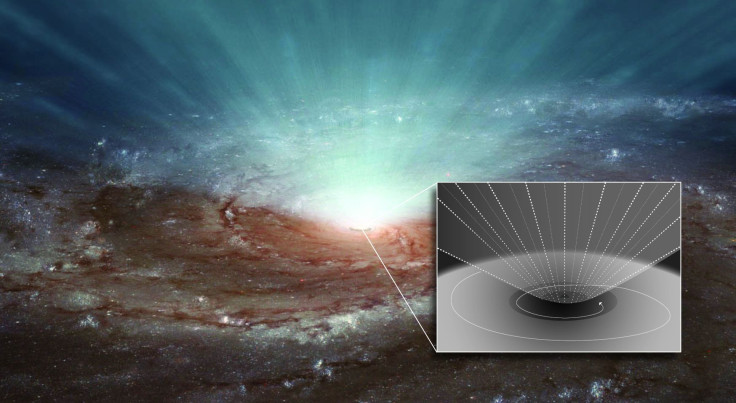Supermassive Black Hole Is 140 Million Times Larger Than The Sun, Still Invisible To The Naked Eye

Astronomers have discovered a supermassive black hole outside the Milky Way galaxy that's more than 140 million times larger than Earth's sun. The observation was recorded with a revolutionary measurement technique, though the black hole is still much smaller than the behemoth (a black hole more than 12 billion times the size of the sun) recorded earlier this year.
Supermassive black holes are labeled thus because, well, they are incredibly huge vacuums that can't actually be seen. Instead, scientists need to analyze the area around a black hole to analyze its size. In this case, the National Radio Astronomy Observatory (NRAO) used what's known as the Atacama Large Millimeter/submillimeter Array (ALMA) to look at NGC 1097, a black hole in a galaxy far, far away (45 million light-years, to be exact).
The ALMA consists of 66 radio telescopes spread across a plateau in northern Chile, an area that sits 16,400 feet above sea level where dry air clarifies the telescope's view. It's a new technique that could help astronomers find a black hole that's even larger than the biggest one known to man, one that's nearly 17 billion times the size of Earth's sun.
“This is the first use of ALMA to make such a measurement for a spiral or barred spiral galaxy,” Kartik Sheth, an astronomer at NRAO and a co-author of a recent scientific paper on the subject, said in a statement. “When you look at the exquisitely detailed observations from ALMA, it's startling how well they fit in with these tested models. It's exciting to think that we can now apply this same technique to other similar galaxies and better understand how these unbelievably massive objects affect their host galaxies.”
© Copyright IBTimes 2024. All rights reserved.




















